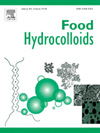Food Hydrocolloids publishes original research in basic and applied aspects of the properties, functionality and use of macromolecules in food systems. Hydrocolloids in this context include polysaccharides, modified polysaccharides and proteins acting alone, or in mixture with other food components, as thickening agents, gelling agents or surface-active agents. Included within the scope of the journal are studies of real and model food colloids - dispersions, emulsions and foams - and the associated physicochemical stability phenomena - creaming, sedimentation, flocculation and coalescence. In particular, Food Hydrocolloids covers: the full scope of hydrocolloids behaviour, including isolation procedures, analytical and physicochemical characterization, through to end use and analysis in finished food products; structural characterization of established food hydrocolloids and new ones ultimately seeking food approval; use of cellculture and bacterial fermentation science and technology in the production of food approved or potentially food-approvable hydrocolloids, and other novel procedures for the extraction and work-up of food hydrocolloids; gelling mechanisms, syneresis and polymer synergism in the gelation process; rheological investigations where these can be correlated with hydrocolloids functionality, colloid stability or organoleptic properties; theoretical, computational or simulation approaches to the study of colloidal stability, provided that they have a clear relationship to food systems; surface properties of absorbed films, and their relationship to foaming and emulsifying behaviour; phase behaviour of low-molecular-weight surfactants or soluble polymers, and their relationship to food colloid stability; droplet and bubble growth, bubble nucleation, thin-film drainage and rupture processes; fat and water crystallization and the influence of hydrocolloids on these phenomena, with respect to stability and texture; direct applications of hydrocolloids in finished food products in all branches of the food industry, including their interactions with other food components; and toxicological, physiological and metabolic studies of hydrocolloids including associated legislative considerations.
